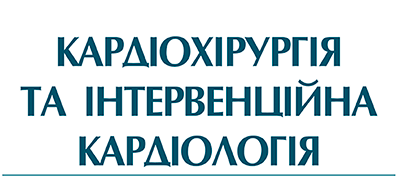Original research
DOI: http://doi.org/10.31928/2305-3127-2019.1.2128
Clinical course and remodeling of left ventricle in patients with ST segment elevention acute myocardial infarction after primary coronary artery stenting
V.A. Skybchik 1, Yu.P. Melen 2
1 Danylo Halytsky Lviv National Medical University, Lviv, Ukraine
2 Lviv Clinical Emergency Hospital, Lviv, Ukraine
The aim – to establish the predictive effect of primary coronary artery stenting on the clinical course and features of left ventricular remodelling in patients with acute ST elevation MI (STEMI) and diastolic dysfunction (DD) in the hospital period.
Materials and methods. The study included 80 patients (group I) with STEMI, who had undergone primary coronary intervention, and 20 patients with STEMI, a control group (group II) without myocardial revascularization. During the hospitalization period, the coronary angiography data were analyzed, the NT-ProBNP and diastolic dysfunction echocardiographic parameters were determined at 5 days, at the time of discharge, bicycle exercise test was performed to determine angina pectoris functional class, and the patients completed the Seattle Angina Questionnaire (SAQ).
Results. The mean NT-proBNP level in patients in the group ІІ was 782.25 ± 17.3 pg/ml, and in the group І – 300.5 ± 14.3 pg/ml (p < 0.001), which reflects less pronounced early LV remodelling processes in patients with STEMI. The ratio of early to late diastolic filling (E/A) in group I was 0.89 ± 0.06, which is characteristic for DD with LV relaxation disturbance, and in group II – 1.17 ± 0.04, which is typical for the restrictive type. According to SAQ scales, patients in group I had better quality of life and higher exercise tolerance at the level of I–II class compared to the patients without revascularization.
Conclusions. Patients with STEMI after a timely performed PCI have significantly lower levels of NT-proBNP, which is an early marker of LV remodelling. Diastolic dysfunction echocardiography signs in these patients are less pronounced, resulting in increased exercise tolerance at the end of hospitalization and improved quality of life defined by SAQ questionnaire.
Key words: ST segment elevation myocardial infarction, diastolic dysfunction, natriuretic peptide, coronary artery primary stenting.
| [PDF] | [References] |








